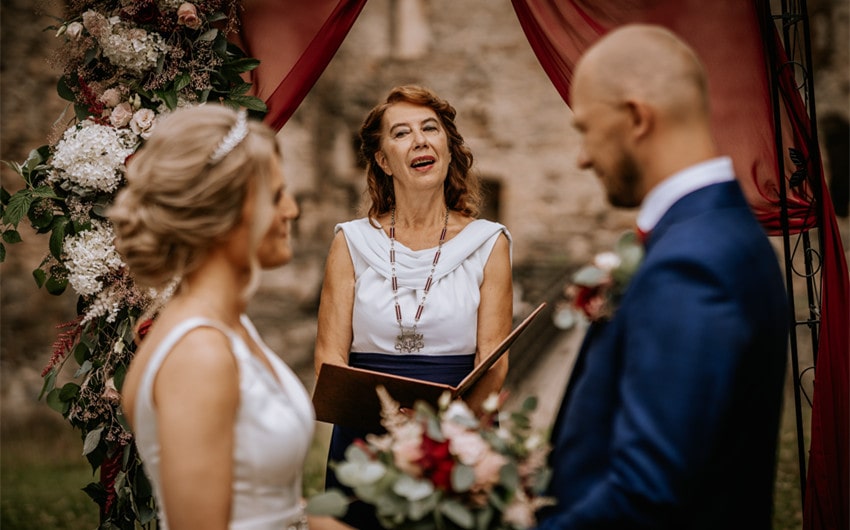Who Says Vows First: Husband or Wife? Understanding Wedding Traditions
When you picture a wedding ceremony, you probably imagine that heartwarming moment when two people stand together, ready to promise forever. But as you visualize that scene, you might also wonder, who says vows first—husband or wife? It’s a question many engaged couples ask while planning their big day. This small detail can carry a surprising amount of emotional and symbolic meaning. The answer depends not only on tradition but also on how couples today interpret love, equality, and individuality in their relationships. Understanding where this custom comes from—and how it continues to evolve—can help you decide what feels most authentic for your own ceremony.
The Traditional Order of Wedding Vows
In most Western wedding traditions, the husband, or groom, traditionally says his vows first. This sequence has been followed for centuries and remains the default order in many religious and civil ceremonies around the world. If you’ve attended a traditional wedding, you’ve likely heard the officiant begin by addressing the groom first with the familiar words: “Do you take this woman to be your lawfully wedded wife?” After the groom responds with “I do,” the same question is then asked to the bride.
This order of vows was not established randomly. Historically, it was rooted in social structures and religious beliefs about marriage. In earlier times, particularly in Christian and Western societies, the man was considered the leader of the household. As such, he was seen as taking the initiative in the marriage ceremony—making the first vow as a sign of responsibility and commitment. The bride’s vow that followed was viewed as her acceptance of that promise and her own pledge to build the union together.
Over time, however, the tradition of the groom speaking first became less about hierarchy and more about maintaining ceremonial rhythm. Much like a dance, the flow of vows has a natural sequence that many couples and officiants still find comfortable to follow. Even in modern times, when equality is emphasized in marriage, many couples still choose this traditional order simply because it feels familiar and balanced.
The Historical Origins of the Tradition
To understand why the groom traditionally goes first, it helps to look back at the religious and cultural origins of the wedding ceremony. The concept of marriage vows dates back thousands of years, appearing in ancient Roman, Jewish, and Christian rituals. However, the version we recognize today in many English-speaking countries is heavily influenced by Christian liturgical traditions—particularly those codified in the Book of Common Prayer, first published in 1549 by the Church of England.
In these early Christian ceremonies, the groom’s vow was seen as an active declaration of commitment, reflecting his role as the initiator of the marital covenant. The man’s promise to “love, cherish, and protect” his wife symbolized his duty to provide and lead, both spiritually and materially. The bride’s response, which often included the phrase “to love, honor, and obey,” was considered her acceptance of that leadership.
While these traditions reflected the societal values of their time, they were also deeply tied to the notion of covenant—an unbreakable agreement made before God. Marriage was seen not as a contract between equals, but as a sacred partnership with defined roles.
Of course, society has changed dramatically since those early days. The idea of one partner leading the other has largely given way to concepts of equality and mutual respect. Yet, the traditional order of vows—husband first, wife second—has persisted, partly because of its historical continuity and the sense of solemnity it brings to the moment.
Modern Shifts: Equality and Personalization
Today, weddings are as diverse and personal as the couples who celebrate them. The traditional rule of who says vows first—husband or wife—is no longer a strict requirement. Modern couples have embraced the freedom to design ceremonies that reflect their unique values, personalities, and relationships.
For many, this means breaking away from the old “groom first” sequence to create something more balanced. Some couples decide to have the bride say her vows first, either to symbolize her strength and independence or simply to put a personal spin on the ceremony. Others opt for simultaneous vows, where both partners speak the same words together, symbolizing unity and equality.
The order may also depend on practical or emotional considerations. For example, if one partner is particularly nervous, they might prefer to go second to have a moment to gather their composure. Some couples even make the decision playful—flipping a coin, drawing straws, or letting their officiant choose spontaneously.
In same-sex marriages, the question of who says vows first often becomes an opportunity for creativity. There’s no predefined “husband” or “wife” role to follow, so couples are free to structure their vows in ways that feel authentic to them. Some alternate lines, while others choose to speak in unison to emphasize partnership and equality.
The beauty of modern weddings lies in this flexibility. The meaning of the vows—the love, trust, and lifelong commitment they express—far outweighs the importance of who speaks first.
Religious and Cultural Variations
Although Western traditions have largely shaped the order of vows as we know it, other cultures approach the exchange differently. Around the world, the sequence and structure of marriage vows vary widely depending on religion, culture, and geography.
In Christian weddings, particularly those following Catholic or Anglican rites, the traditional format remains: the groom says his vows first, followed by the bride. However, in many Protestant and nondenominational ceremonies, officiants give couples the freedom to choose the order that feels right to them.
In Jewish weddings, the vow exchange can take several forms. Traditionally, the groom gives the bride a ring and declares his commitment, often saying, “Behold, you are consecrated to me with this ring according to the law of Moses and Israel.” In modern Jewish ceremonies, however, both partners may exchange rings and vows, often simultaneously, reflecting mutual commitment.
In Hindu weddings, the concept of vows is woven into a ritual called the Saptapadi, or “Seven Steps.” The bride and groom walk around a sacred fire seven times, reciting promises to each other during each step. This ritual is highly symbolic, with both partners sharing the vows equally—neither one “goes first.”
In Muslim wedding ceremonies (Nikah), vows are typically recited by an officiant, and the focus is on consent. Both bride and groom express their agreement to the marriage, often through representatives, emphasizing mutual acceptance rather than sequence.
In civil or secular weddings, there are no set rules. The officiant usually asks couples how they’d like to handle the order, allowing full freedom to decide. This personalization reflects the modern belief that marriage is a partnership of equals, not a performance of gender-based tradition.
Examples of Modern Alternatives
Weddings today are filled with creativity and personal touches, and the way couples exchange vows is no exception. Here are a few of the most popular modern alternatives to the traditional “husband first” format:
Simultaneous vows: Some couples prefer to say their vows at the same time, reciting the same words together. This approach emphasizes unity, equality, and the idea that both partners are entering marriage side by side.
Alternating vows: Instead of one person speaking all their vows at once, couples take turns exchanging promises line by line. This back-and-forth rhythm not only keeps the audience engaged but also symbolizes balance and mutual devotion.
Silent or nonverbal vows: In some contemporary or interfaith weddings, couples choose to express their commitment through gestures instead of words. Lighting candles, planting a tree, or performing a unity ritual can serve as powerful metaphors for the promises being made.
Vows through letters or readings: Some couples write personal letters to each other and have them read aloud by the officiant or read privately before the ceremony. This approach allows for intimacy and emotion while avoiding public speaking nerves.
These variations show that there’s no single “right” way to exchange vows. Whether you follow tradition or invent something entirely your own, what matters most is that the promises feel authentic and heartfelt.
Love Over Tradition
Ultimately, the question of who says vows first—husband or wife—is less about etiquette and more about meaning. In centuries past, the order carried symbolic weight tied to social roles. Today, it’s a reflection of choice, personality, and partnership.
Some couples find comfort in honoring tradition, appreciating the sense of continuity that comes from following a timeless format. Others take joy in breaking from convention, crafting a ceremony that mirrors the equality and individuality that define their relationship.
What truly matters is the sincerity behind the words, not the order in which they are spoken. Whether the groom speaks first or the bride begins, each vow represents a moment of vulnerability and devotion—a mutual promise to love, support, and grow together.
In the end, the exchange of vows is about unity. It’s a bridge between two lives, built with words that echo long after the ceremony ends. So if you ever find yourself wondering who says vows first, husband or wife, remember that the most important thing is not who begins—it’s the love that both carry into forever.






